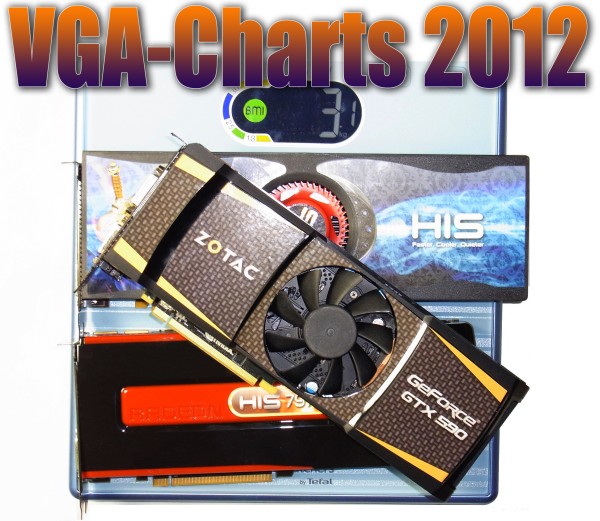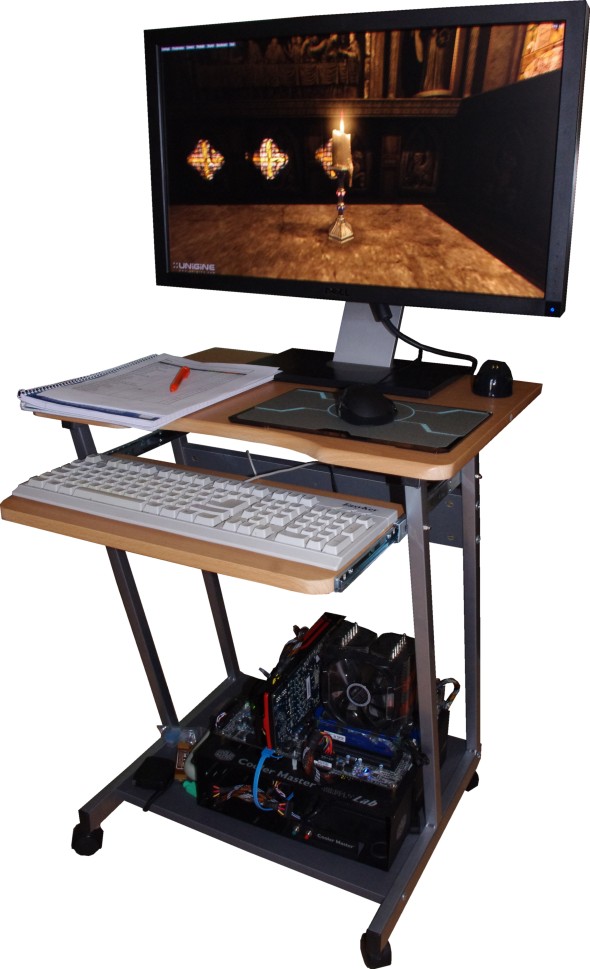Meet The 2012 Graphics Charts: How We're Testing This Year
It's time to revamp the Graphics Charts section! For 2012, we're increasing the number of games and resolutions, dividing the results into three segments. But that's not all. We also include GPGPU benchmarking, power consumption, temperature, and noise.
Meet Our 2012 Graphics Charts
This year, we massively expanded the number of benchmarks in our graphics charts. Just to give you an idea, a complete run through our benchmark suite now takes three hours and 12 minutes for the fastest board, not counting installing and uninstalling hardware, measuring sound, or taking thermal readings.
As a result, we're consciously splitting the workload up and focusing on high-end and premium cards. Don't worry, though. We'll add up to 20 new boards each month until the lower end of the performance range is filled out, too. As this quarter progresses, we also plan to add the fastest dual-GPU cards and reference models of lower mid-range and entry-level cards, as well as custom-designed variants of already-tested reference cards. It's a long process that takes a lot of planning, but if you don't see what you're looking for today, you can be sure we're in the process of adding it!
Due to numerous requests, and in response to feedback in the forum, this article strives to explain the charts, the underlying test methodology, and the settings we use to generate the results you'll see in the charts section. This should increase transparency and make comparisons easier. Although we can't anticipate and test all possible use cases, we're trying to include as broad a range of benchmarks as practically possible.
You can visit the 2012 Graphics Charts by clicking this link
The 2012 Test Rig
We were starting to see some evidence of a processor bottleneck using our Core i5-based platform in tests able to apply a heavy CPU load, like DiRT 3. Since the Radeon HD 7970 and GeForce GTX 680 push performance to new levels, demanding a more powerful processor, we chose Intel's Core i7-2600K overclocked to 4.5 GHz for this year's test rig. Hyper-Threading is enabled, in the event an application can make use of it.
| 2012 Graphics Charts Test Bench | |
|---|---|
| CPU | Intel Core i7-2600K (Sandy Bridge), 3.4 GHz, LGA 1155, 8 MB Shared L3 Cache @ 4.5 GHz (45 * 100 MHz) |
| CPU Cooler | Prolimatech SuperMega plus Noiseblocker Multiframe |
| Motherboard | Gigabyte Z68X-UD7 B3, Intel Z68 Express |
| RAM | 2 x 4 GB Kingston HyperX DDR3-1600 |
| System Disk | Kingston V100+ 256 GB SSD |
| Chassis | Cooler Master Lab |
| Power Supply | Corsair AX1200 |
| Operating System | Windows 7 Ultimate x64 SP1 |
We set off on this journey at the beginning of the year, meaning Z77-based boards weren't yet ready. There was also no reason to mess with the memory subsystem from last year's reference platform. However, we are using a power supply, Corsair's AX1200, which easily drives up to four graphics cards when we start paying more attention to SLI and CrossFire performance. We're also using Kingston's V100+ 256 GB SSD for all of our applications and games.
Get Tom's Hardware's best news and in-depth reviews, straight to your inbox.
The test system is mounted on a rolling desk. This way, we can move the whole rig into a sound-proof test chamber for the acoustic measurements without installing the graphics cards in a second test rig. This is important, since we do all the benchmarks in an air-conditioned room kept at 72°F that is not suitable for sound level measurements below 32 dB(A).
Next, we'll take a look at our choices for monitor and resolutions.
Current page: Meet Our 2012 Graphics Charts
Next Page Selecting A Monitor And Choosing Resolutions
Igor Wallossek wrote a wide variety of hardware articles for Tom's Hardware, with a strong focus on technical analysis and in-depth reviews. His contributions have spanned a broad spectrum of PC components, including GPUs, CPUs, workstations, and PC builds. His insightful articles provide readers with detailed knowledge to make informed decisions in the ever-evolving tech landscape
-
johnny_utah While I love the new techniques, using BITCOIN to bench GPUGPU performance instead of Folding @ Home? Um, okay.Reply -
Still with the bar charts? Would *love* to see scatter plots with price/score on the axes... So much more useful in picking out a card.Reply
-
AznCracker Man the charts are dying to be updated. Too bad it isn't done more often since it takes a lot of work.Reply -
pharoahhalfdead johnny_utahWhile I love the new techniques, using BITCOIN to bench GPUGPU performance instead of Folding @ Home? Um, okay.Reply
I agree. I know Tom's spends a lot of time benchmarking, but Folding@home is something that is a bit more common. I would love to see F@H in some articles.
BTW, I appreciate all the work you guys do. -
randomkid Where's the 5760x1080? In the area where I come from, 3x 1920x1080p 22" monitor cost around the same or even less than a single 2560x1440/1600 27" monitor so this is a more likely configuration among gamers.Reply
The 5760x1080 resolution will also push the GPU's harder than a 2560x1440/1600 could so why limit the resolution there? -
Reply
We'll add up to 20 new boards each month until the lower end of the performance range is filled out, too.
How far back in GPU generations are you going to test, if at all? I saw the power consumption charts and could only see GTX 500, 600 and Radeon 6000, 7000 series. I have an EVGA GTX 480 SC for two years and do like to know how it compares to the newer series of GPUs. Much appreciated. -
Yargnit MMO FanYup no surprise here typical Nvidia benchmark suite fuck sakes.Reply
So what would YOU like to see used then? If they were trying to push Nvidia wouldn't Hawx 2 be in the suite? -
shinym For Starcraft II you say "This game doesn't stress the CPU, and is thus well-suited for GPU benchmarking." Looks like you got CPU and GPU mixed up there.Reply

